Abstract
1 Azathioprine (36 μM) caused nearly complete and consistent inhibition of the mixed lymphocyte reaction (MLR).
2 The inhibitory effect of azathioprine (36 μM) on the MLR decreased with increasing delay of drug addition.
3 At 36 μM azathioprine was more inhibitory (34%) than 6-mercaptopurine.
4 The addition of red blood cells or glutathione decreased but did not abolish the difference in activity between azathioprine and 6-MP on the MLR.
5 The inhibitory effect of azathioprine or 6-MP on the human MLR was partially reversed after 24 h by washing.
6 Dithiothreitol (DTT) did not modify the reversibility of azathioprine inhibition by washing.
7 Restimulation of the washed azathioprine treated MLR cultures after 24 h by the same or different allogeneic stimulating lymphocytes had no effect.
8 The responding and stimulating lymphocytes were affected to the same extent by azathioprine.
9 These results suggest that azathioprine does not inhibit the MLR by deleting antigen stimulated lymphocytes. They would be more in keeping with an action on the lymphocyte membrane.
Full text
PDF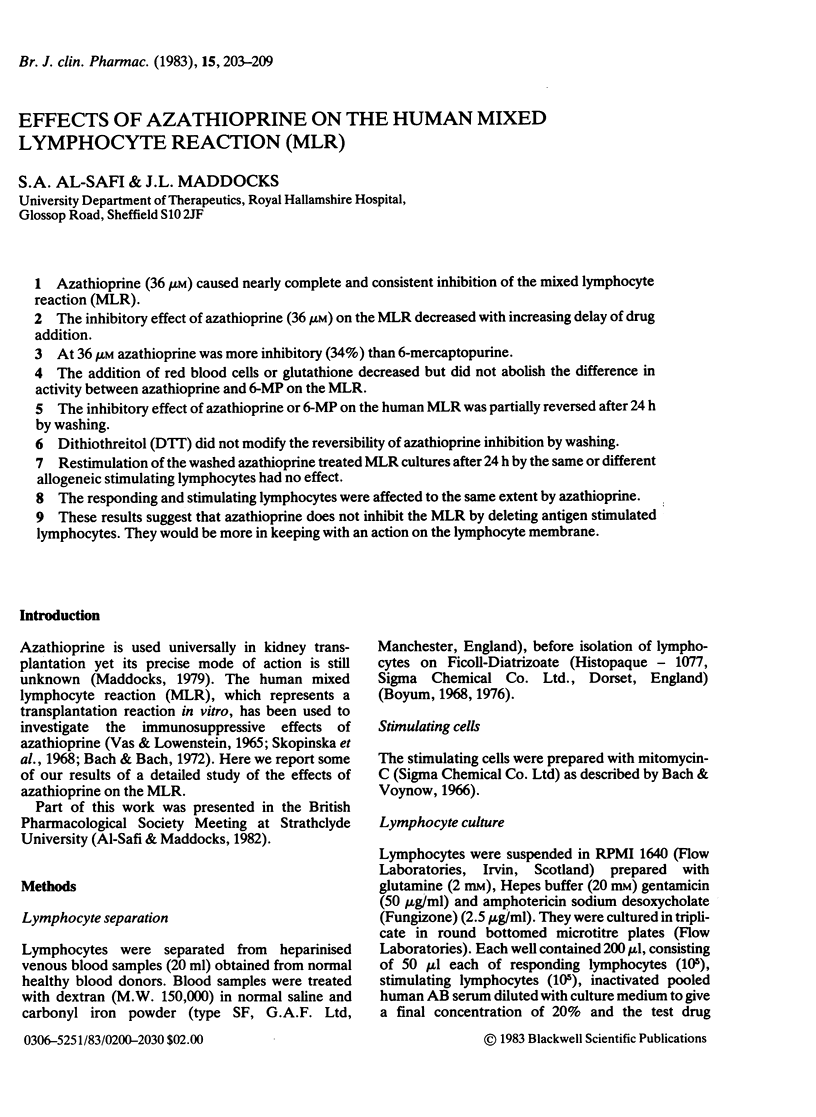
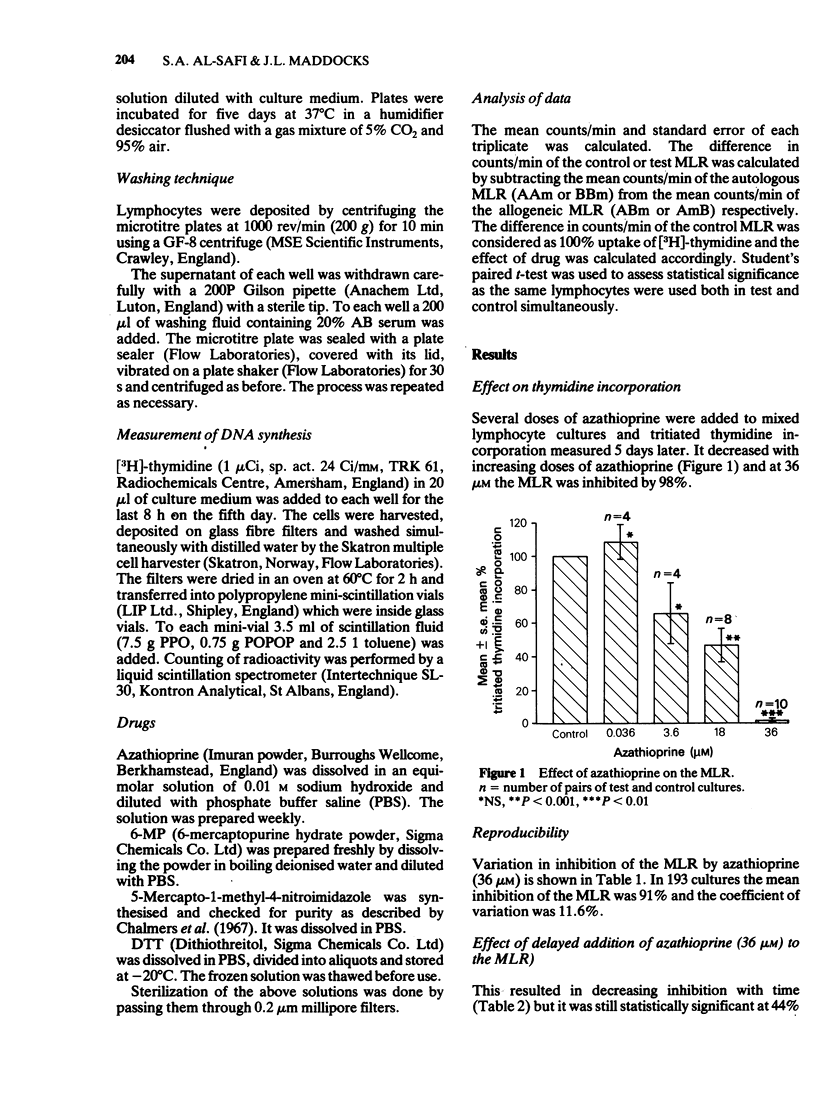

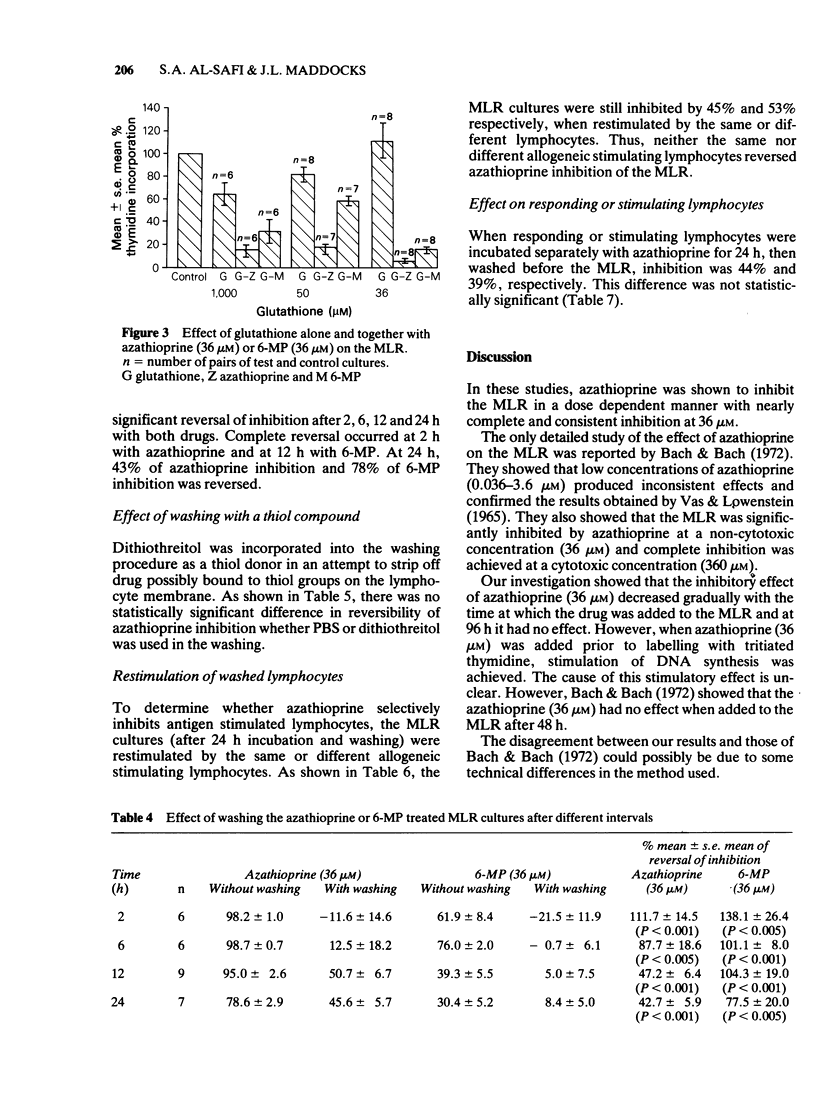
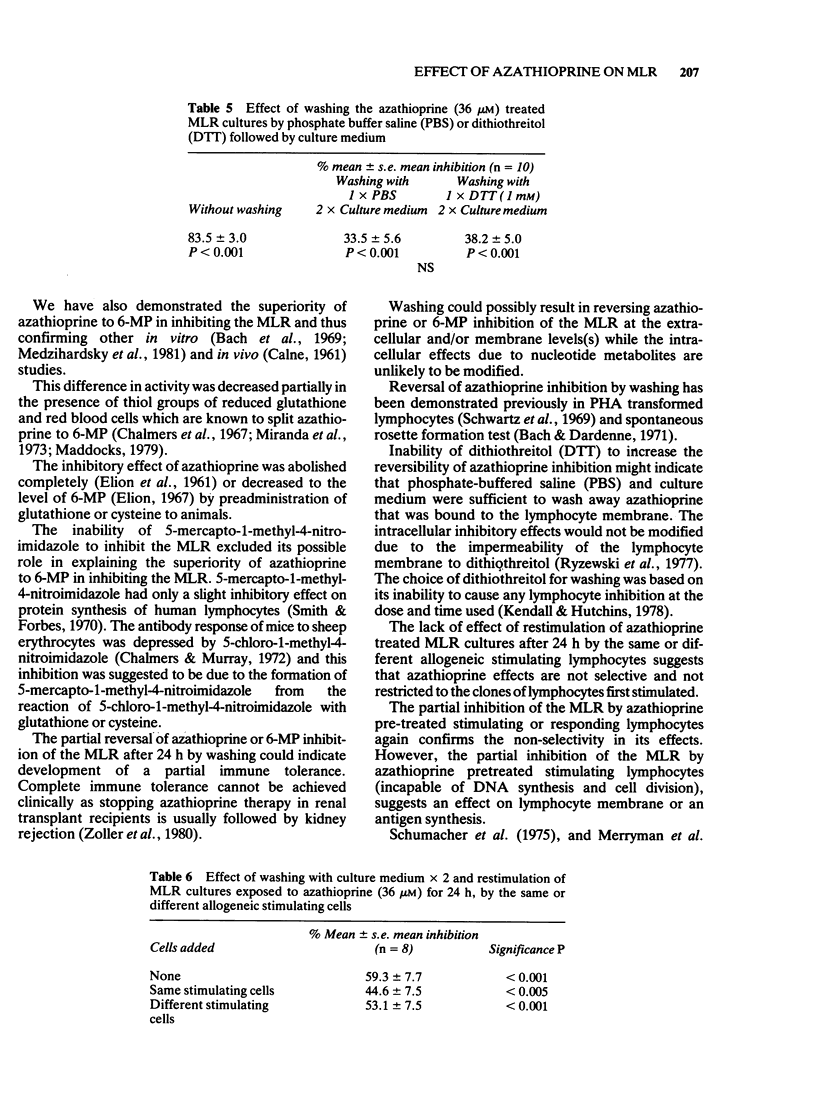
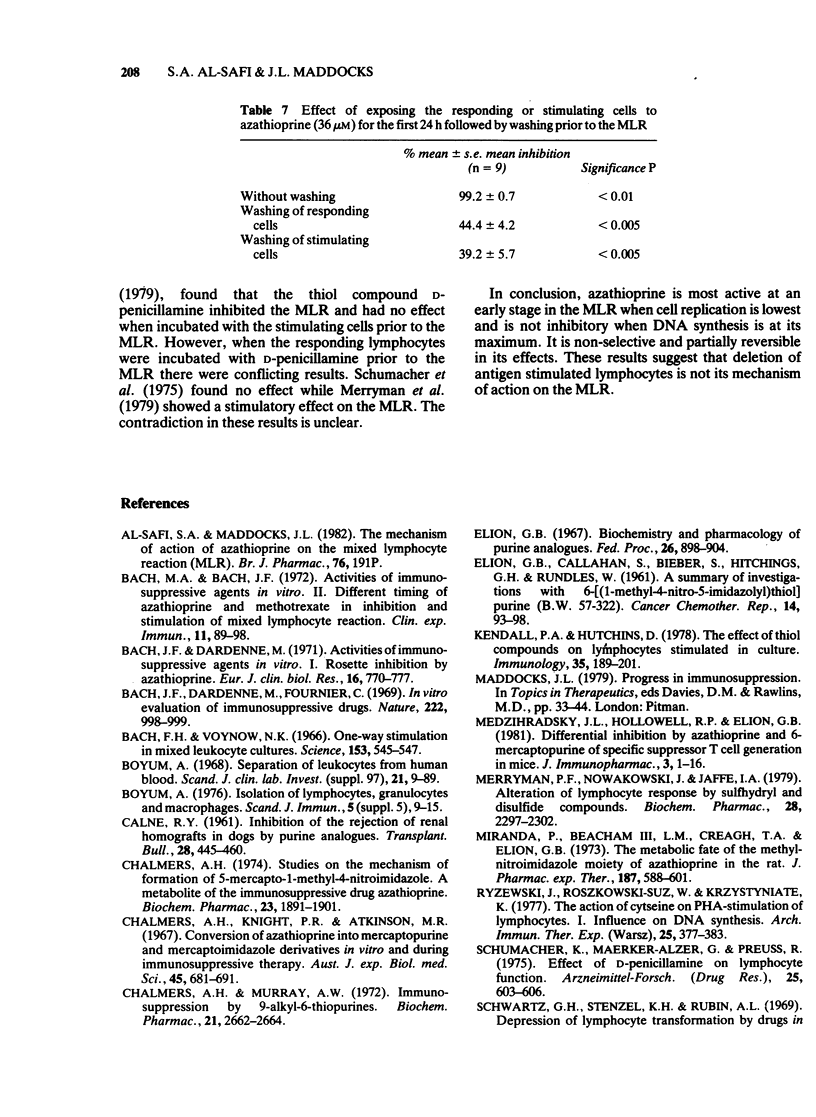

Selected References
These references are in PubMed. This may not be the complete list of references from this article.
- Bach F. H., Voynow N. K. One-way stimulation in mixed leukocyte cultures. Science. 1966 Jul 29;153(3735):545–547. doi: 10.1126/science.153.3735.545. [DOI] [PubMed] [Google Scholar]
- Bach J. F., Dardenne M. Activities of immunosuppressive agents in vitro. I. Rosette inhibition by azathioprine. Rev Eur Etud Clin Biol. 1971 Oct;16(8):770–777. [PubMed] [Google Scholar]
- Bach J. F., Dardenne M., Fournier C. In vitro evaluation of immunosuppressive drugs. Nature. 1969 Jun 7;222(5197):998–999. doi: 10.1038/222998a0. [DOI] [PubMed] [Google Scholar]
- Bach M. A., Bach J. F. Activities of immunosuppressive agents in vitro. II. Different timing of azathioprine and methotrexate in inhibition and stimulation of mixed lymphocyte reaction. Clin Exp Immunol. 1972 May;11(1):89–98. [PMC free article] [PubMed] [Google Scholar]
- Bøyum A. Isolation of lymphocytes, granulocytes and macrophages. Scand J Immunol. 1976 Jun;Suppl 5:9–15. [PubMed] [Google Scholar]
- Chalmers A. H., Knight P. R., Atkinson M. R. Conversion of azathioprine into mercaptopurine and mercaptoimidazole derivatives in vitro and during immunosuppressive therapy. Aust J Exp Biol Med Sci. 1967 Dec;45(6):681–691. doi: 10.1038/icb.1967.68. [DOI] [PubMed] [Google Scholar]
- Chalmers A. H. Studies on the mechanism of formation of 5-mercapto-1-methyl-4-nitroimidazole, a metabolite of the immunosuppressive drug azathioprine. Biochem Pharmacol. 1974 Jul 1;23(13):1891–1901. doi: 10.1016/0006-2952(74)90198-1. [DOI] [PubMed] [Google Scholar]
- Chgalmers A. H., Burdorf T., Murray A. W. Immunosuppression by 9-alkyl-6-thiopurines. Biochem Pharmacol. 1972 Oct 1;21(19):2662–2664. doi: 10.1016/0006-2952(72)90238-9. [DOI] [PubMed] [Google Scholar]
- De MIRANDA P., Beacham L. M., 3rd, Creagh T. H., Elion G. B. The metabolic fate of the methylnitroimidazole moiety of azathioprine in the rat. J Pharmacol Exp Ther. 1973 Dec;187(3):588–601. [PubMed] [Google Scholar]
- Elion G. B. Symposium on immunosuppressive drugs. Biochemistry and pharmacology of purine analogues. Fed Proc. 1967 May-Jun;26(3):898–904. [PubMed] [Google Scholar]
- Kendall P. A., Hutchins D. The effect of thiol compounds on lymphocytes stimulated in culture. Immunology. 1978 Jul;35(1):189–201. [PMC free article] [PubMed] [Google Scholar]
- Medzihradsky J. L., Hollowell R. P., Elion G. B. Differential inhibition by azathioprine and 6-mercaptopurine of specific suppressor T cell generation in mice. J Immunopharmacol. 1981;3(1):1–16. doi: 10.3109/08923978109026415. [DOI] [PubMed] [Google Scholar]
- Merryman P. F., Nowakowski J., Jaffe I. A. Alteration of lymphocyte response by sulfhydryl and disulfide compounds. Biochem Pharmacol. 1979 Aug 1;28(15):2297–2302. doi: 10.1016/0006-2952(79)90693-2. [DOI] [PubMed] [Google Scholar]
- Ryzewski J., Roszkowski-Sliz W., Krzystyniak K. The action of cysteine on PHA-stimulation of lymphocytes. I. Influence of DNA synthesis. Arch Immunol Ther Exp (Warsz) 1977;25(3):377–383. [PubMed] [Google Scholar]
- Schumacher K., Maerker-Alzer G., Preuss R. Effect of D-penicillamine on lymphocyte function. Arzneimittelforschung. 1975 Apr;25(4):603–606. [PubMed] [Google Scholar]
- Schwartz G. H., Stenzel K. H., Rubin A. L. Depression of lymphocyte transformation by drugs in vitro. Effects of a new immunosuppressant, Cinanserin. Transplantation. 1969 Nov;8(5):704–711. doi: 10.1097/00007890-196911000-00015. [DOI] [PubMed] [Google Scholar]
- Skopińska E., Rychlikowa M., Nouza K. Immunosuppresive drugs in lymphocyte mixed cultures. Bull Acad Pol Sci Biol. 1968;16(6):385–389. [PubMed] [Google Scholar]
- Zoller K. M., Cho S. I., Cohen J. J., Harrington J. T. Cessation of immunosuppressive therapy after successful transplantation: a national survey. Kidney Int. 1980 Jul;18(1):110–114. doi: 10.1038/ki.1980.116. [DOI] [PubMed] [Google Scholar]


